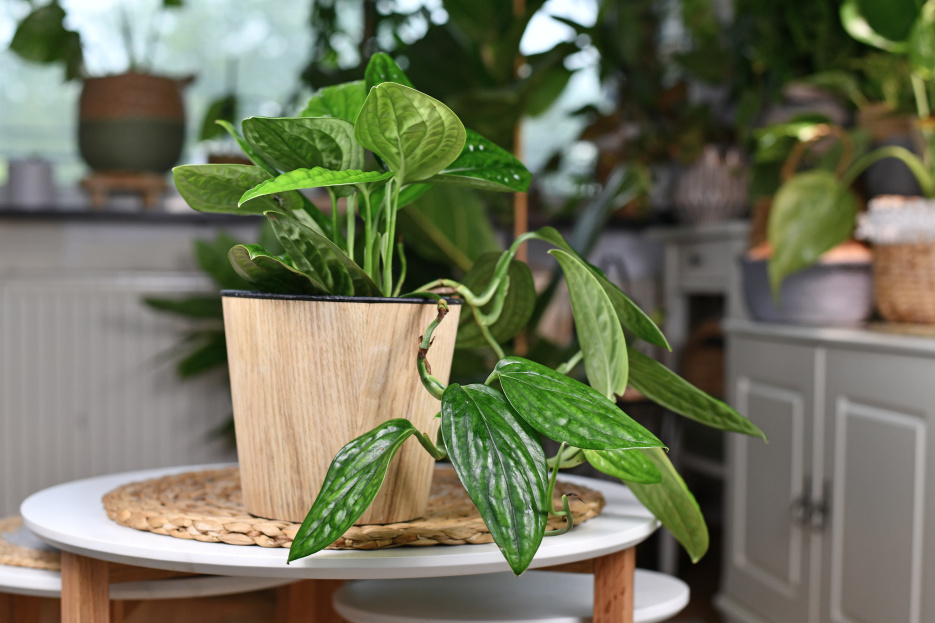
Monstera Peru, botanically known as Monstera karstenianum, is a unique and visually striking houseplant that's perfect for anyone looking to add texture and bold foliage to their indoor jungle. Unlike its more famous cousin, the Monstera deliciosa, this species doesn’t have dramatic leaf fenestrations—but what it lacks in splits, it makes up for with richly veined, glossy, and deeply puckered leaves. Its compact growth habit and climbing tendencies make it ideal for small spaces, moss poles, or hanging planters.
Here’s how to help your Monstera Peru thrive indoors.
Monstera Peru prefers bright, indirect light. A few feet away from a south- or east-facing window is ideal. While it can tolerate medium light, lower light levels may slow growth and lead to less vibrant leaves. Direct sunlight should be avoided, as the intense rays can burn its leaves.
This plant likes to dry out slightly between waterings. Water your Monstera Peru when the top 1–2 inches of soil feel dry. Overwatering can lead to root rot, so always check your plants soil first and ensure the pot has good drainage.
In spring and summer, watering every 7–10 days is typical, while in winter, you may need to water only every 2–3 weeks.
As a tropical plant, Monstera Peru enjoys moderate to high humidity—ideally 50% or above. It will appreciate occasional misting, a nearby humidifier, or being grouped with other tropical plants.
Keep your Peru in a warm environment, ideally between 65–85°F (18–29°C). Avoid cold drafts, air conditioners, or spots near heaters. Temperatures below 55°F (13°C) can stress the plant.
Use a well-draining, airy soil mix to keep your Monstera Peru happy. A good blend includes potting soil, orchid bark, perlite, and some coco coir or peat moss. This combination promotes drainage and root aeration, which helps prevent rot and compaction.
Repot your Monstera every 1–2 years or when it becomes root-bound. Spring is the best time to repot, giving the plant a fresh start at the beginning of its growing season.
Feed your Monstera Peru with a balanced liquid houseplant fertilizer diluted to half strength every 4–6 weeks during the growing season (spring through summer). Reduce or stop feeding during the winter months when the plant's growth naturally slows down.
Monstera Peru is a vining plant, so it loves to climb. Adding a moss pole, trellis, or stake will encourage vertical growth and help support its thick stems and heavy foliage. You can also let it trail in a hanging basket for a cascading effect.
Its growth rate is moderate under the right conditions and can surprise you with its resilience and strength once established.
This plant requires minimal pruning. You can remove any yellow, damaged, or misshapen leaves to maintain its appearance and overall health. Pruning can also help encourage bushier growth if it becomes too leggy.
Use clean, sharp scissors or pruning shears to avoid spreading disease.
Monstera Peru is easy to propagate through stem cuttings. Select a healthy stem with at least one node (where the leaf meets the stem), and either place it in water or plant it directly in moist soil or sphagnum moss. Roots should start forming in a few weeks, especially in warm, humid conditions.
Like other Monsteras, Monstera Peru is toxic to pets and humans if ingested, due to calcium oxalate crystals. Keep it out of reach of curious pets or small children.
Addressing these issues early can help your Monstera bounce back quickly.